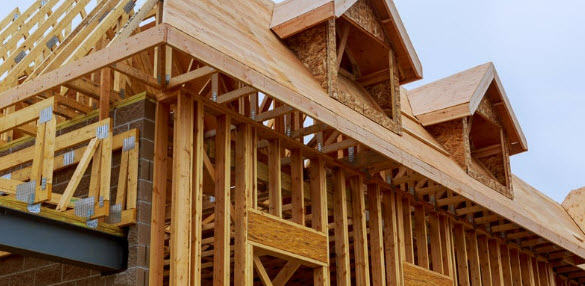When shopping for a mortgage, finding the best mortgage interest rate can save you thousands over the life of your loan. Whether you’re buying a new home or refinancing, comparing offers from different lenders is crucial. In this post, we’ll walk you through how to compare current mortgage interest rates, identify what makes a good mortgage rate, and find the most favorable terms for your situation.
Why Mortgage Interest Rates Matter
The interest rate on your mortgage is the percentage of the loan amount that you’ll pay your lender in addition to repaying the principal. Even a small difference in interest rates can have a significant impact on your monthly payments and the total amount paid over time. For example, a 0.5% difference in rates on a $300,000 mortgage can mean thousands in savings or extra costs over the loan term.
Steps to Compare Mortgage Interest Rates
1. Check Current Mortgage Interest Rates
The first step in finding the best mortgage is to understand the current mortgage interest rates available. Rates can fluctuate based on economic conditions, Federal Reserve policies, and your personal financial profile. Start by researching average rates across different loan types:
- 30-Year Fixed-Rate Mortgages: The most common mortgage option, offering stable payments over 30 years.
- 15-Year Fixed-Rate Mortgages: These loans typically come with lower rates but higher monthly payments.
- Adjustable-Rate Mortgages (ARM): These loans start with lower rates, which adjust after a fixed period.
2. Understand What a Good Mortgage Rate Is
A good mortgage rate depends on factors like your credit score, loan-to-value ratio (LTV), and the loan type. Generally, higher credit scores and lower LTV ratios will qualify you for lower interest rates. Here’s a rough guide to what’s considered a good mortgage rate based on credit scores:
Credit Score | Good Mortgage Rate |
740+ | 5.0% or lower |
700 – 739 | 5.25% – 5.5% |
680 – 699 | 5.75% – 6.0% |
620 – 679 | 6.25% – 6.75% |
3. Shop Multiple Lenders
Interest rates can vary between lenders, so it’s essential to get quotes from multiple sources. This includes national banks, local credit unions, and online mortgage lenders. When you compare quotes, make sure to look beyond the headline rate and consider the Annual Percentage Rate (APR), which includes fees and other loan costs.
4. Compare Mortgage Refinance Rates
If you’re looking to refinance, mortgage refinance rates can differ slightly from new purchase rates. Refinancing can help you lower your interest rate, reduce monthly payments, or shorten your loan term. Be sure to compare refinance rates from multiple lenders to ensure you’re getting the best deal.
5. Consider Points and Fees
Some lenders offer the option to buy points—prepaid interest that reduces your loan’s interest rate. Each point typically costs 1% of the loan amount and lowers your rate by about 0.25%. Consider whether paying points makes sense based on how long you plan to stay in your home and the upfront costs.
6. Lock in Your Rate
Once you find a good mortgage rate, ask your lender about locking it in. Mortgage rates can fluctuate, and a rate lock ensures you keep your rate even if the market changes before closing.
Factors That Influence Mortgage Interest Rates
1. Credit Score
Your credit score plays a significant role in determining your mortgage interest rate. Higher scores usually mean lower rates, as lenders view you as a less risky borrower.
2. Loan-to-Value Ratio (LTV)
LTV is the amount you’re borrowing compared to the home’s value. A lower LTV (i.e., putting more money down) typically results in a better interest rate.
3. Loan Type and Term
The type of mortgage you choose also impacts the rate. Fixed-rate loans usually come with higher rates than adjustable-rate mortgages (ARMs) initially, but ARMs can rise over time. Shorter loan terms, like a 15-year mortgage, often have lower rates than 30-year loans.
4. Economic Conditions
Lenders adjust mortgage rates based on broader economic factors, such as inflation, Federal Reserve policies, and bond market trends. Keeping an eye on economic news can help you time your rate search effectively.
Current Mortgage Interest Rates
Here’s a general snapshot of current mortgage interest rates based on different loan types:
Loan Type | Current Mortgage Interest Rates |
30-Year Fixed | 5.5% – 6.0% |
15-Year Fixed | 4.75% – 5.25% |
5/1 Adjustable-Rate | 5.0% – 5.75% |
Pros and Cons of Different Mortgage Rate Types
Rate Type | Pros | Cons |
Fixed-Rate Mortgage | Stable payments, protection from rate increases | Typically higher initial rates |
Adjustable-Rate Mortgage | Lower initial rates | Rates can increase after the fixed period |
15-Year Fixed-Rate Mortgage | Lower overall interest, pay off mortgage faster | Higher monthly payments |
Compare mortgage rates with your free Home Wealth Blueprint by Home Loan Advisor. Access tailored mortgage loan recommendations and personalized wealth strategies with real-time data insights.
FAQs
- What is a good mortgage rate?
A good mortgage rate typically ranges from 5% to 6%, depending on factors like credit score and loan type. Rates below 5% are considered excellent. - How do I find the best mortgage interest rate?
Shop around with multiple lenders, compare rates, and consider your credit score, loan type, and LTV ratio to find the best rate. - What factors affect mortgage rates?
Credit score, loan-to-value ratio, loan type, and overall economic conditions are key factors that affect your mortgage rate. - Should I consider an adjustable-rate mortgage (ARM)?
ARMs offer lower initial rates but carry the risk of rate increases after the fixed period. Consider an ARM if you plan to sell or refinance before the rate adjusts. - What is a mortgage rate lock?
A rate lock guarantees your interest rate for a set period (usually 30 to 60 days) while you complete the mortgage process. - How do I compare mortgage refinance rates?
Get quotes from multiple lenders, and compare the mortgage refinance rates along with fees and closing costs to find the best deal. - Is it worth paying points for a lower mortgage rate?
Paying points makes sense if you plan to stay in your home long-term and want to lower your monthly payments. Otherwise, the upfront cost may not be worthwhile. - How often do mortgage interest rates change?
Mortgage rates can change daily based on market conditions, Federal Reserve policies, and lender adjustments. - Can I refinance to get a lower mortgage interest rate?
Yes, refinancing can help you lock in a lower interest rate, reduce your payments, or shorten your loan term. - What’s the difference between APR and mortgage interest rate?
The interest rate is the cost of borrowing, while APR includes the interest rate and other loan-related fees, providing a clearer picture of the total loan cost.
Conclusion
Finding the best mortgage interest rates requires shopping around, comparing lenders, and understanding the factors that influence your rate. Whether you’re looking at current mortgage interest rates for a new purchase or considering mortgage refinance rates, knowing what constitutes a good mortgage rate will help you secure the best possible terms for your financial situation.



